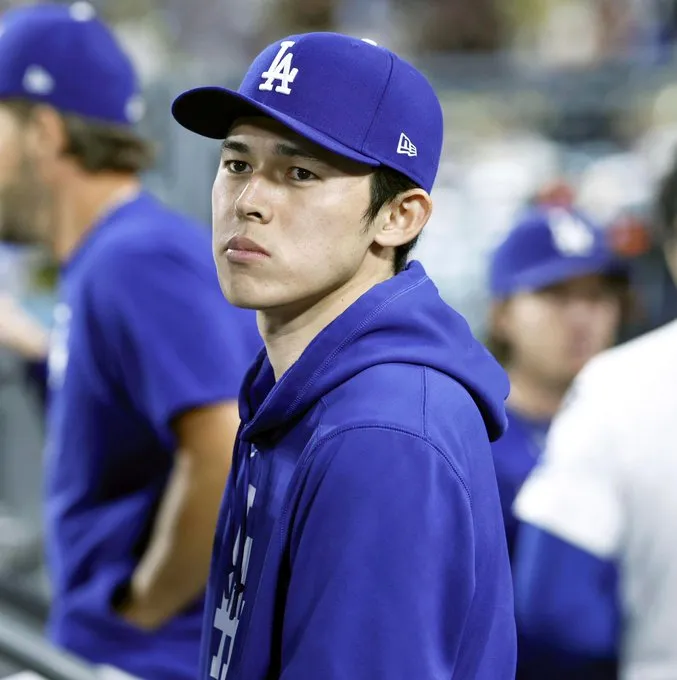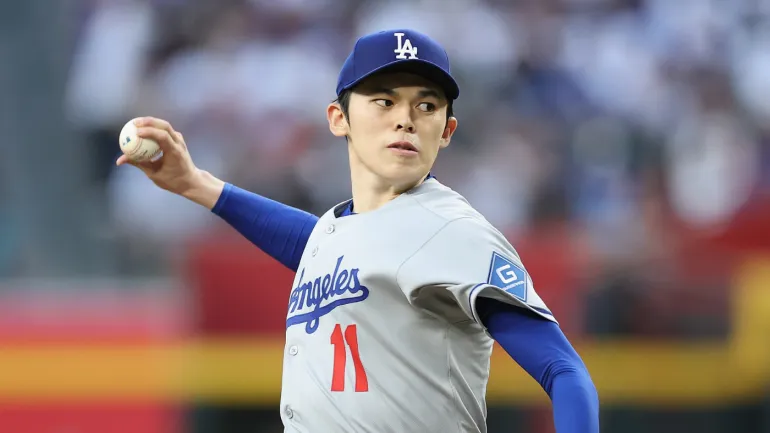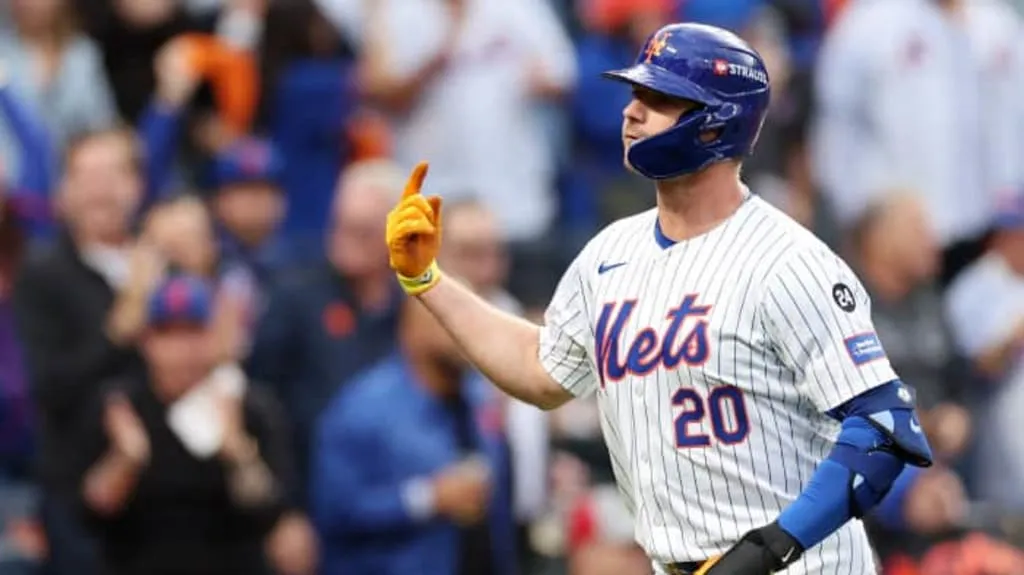

Innings or Injuries? The Hidden Reason Roki Sasaki Can’t Stay Dominant
The Rise of Roki Sasaki: Japan’s Most Electrifying Arm
The name Roki Sasaki sends chills down the spine of batters not only in Japan but across the baseball world. Bursting onto the professional scene with a fastball that touches 102 mph and a splitter that seems to defy physics, Sasaki was quickly labeled as “The Monster of the Reiwa Era.” But beneath the brilliance, a nagging question continues to haunt fans, scouts, and analysts alike: Why can’t Roki Sasaki stay dominant for an entire season? Is it a matter of innings limits, or are injuries quietly derailing his path to becoming the most dominant pitcher in the world?

Perfect Games and Shattered Ceilings
In April 2022, Roki Sasaki threw a perfect game with 19 strikeouts — a feat nearly unheard of in the modern era. He followed it up with eight more perfect innings in his very next start. The performance shook the foundations of baseball, sparking comparisons to legends like Nolan Ryan, Pedro Martínez, and Shohei Ohtani. Scouts from MLB were already salivating, and the Japanese media crowned him the next global superstar.
But just as the spotlight brightened, Sasaki’s appearances became more sporadic. His innings dipped. He was suddenly “rested” for extended periods, and whispers of fatigue and arm soreness crept into conversations. For a pitcher who seemed unhittable, his inconsistency in availability was jarring.
The Arm That Launched A Thousand Questions
To understand the dilemma, one must dive into Sasaki’s background. Born in Iwate Prefecture, Sasaki experienced early tragedy when his father and grandparents were killed during the 2011 tsunami. From that loss emerged a fierce determination. He was clocked throwing 163 km/h (101 mph) in high school — instantly making him the most anticipated pitching prospect in Japan.
Yet, even during his amateur days, there was caution surrounding his usage. His high school coach famously did not allow him to pitch in a crucial national tournament in order to preserve his arm. That concern followed him to the pros, where Chiba Lotte Marines have carefully managed his workload.
But has this overprotection actually stunted his growth, or is there something more serious lurking?
Innings Limit or Injury Management?
On paper, the innings limit strategy seems sound. Pitchers, especially young ones with explosive mechanics like Sasaki, are at higher risk of injuries due to stress on their shoulders and elbows. In fact, the Tommy John surgery epidemic among young flamethrowers in the MLB has many organizations — including NPB teams — rethinking how much their pitchers should throw.
However, while Sasaki has thrown fewer innings, he has still experienced significant downtime. In 2023 and again in 2024, he missed key stretches of the season. The official reasons varied: “arm tightness,” “precautionary rest,” “fatigue.” But insiders and medical analysts have pointed out that these symptoms may be early signs of chronic overuse injuries or even underlying structural issues.
Unlike Shohei Ohtani, who underwent Tommy John surgery and came back stronger, Sasaki has yet to face a major reconstructive procedure. But that could either mean his team is doing an excellent job of preserving him — or they are stalling against the inevitable.
Velocity vs. Longevity: The Pitcher’s Dilemma
What makes Roki Sasaki’s case unique is his extreme velocity and efficiency. He often averages over 98 mph throughout his starts, a feat matched by only a handful of MLB starters. His splitter has a 40+% whiff rate, making it arguably the best secondary pitch in Japan.
But such elite tools often come at a cost. According to biomechanics experts, Sasaki’s delivery — though technically sound — places considerable torque on the elbow and shoulder. These are precisely the areas that tend to break down over time.
Velocity is addictive, not just for fans but for pitchers themselves. When a pitcher knows he can blow a fastball by any batter, it’s hard to pull back. But that constant red-lining of the arm is exactly what shortens careers.
In Sasaki’s case, the inconsistency in his usage pattern suggests that either he or the team is battling pain behind the scenes, pain that hasn’t yet escalated to surgery, but remains a persistent threat.
MLB Ambitions: A Double-Edged Sword
There’s no question that Sasaki intends to play in Major League Baseball. He’s made no secret of it. In fact, reports from 2023 indicated that he was already in talks to use the posting system to head to the U.S. before the typical NPB free agency timeline.
But this desire has created friction with his team and raised questions about his long-term physical readiness. MLB teams want durability, not just flashes of brilliance. They want a pitcher who can go 180+ innings per season and take the mound every fifth day.
With Sasaki’s current trajectory — which includes fewer than 120 innings per season and multiple injury-related absences — some MLB scouts have expressed concerns about his durability. As one American league executive put it: “No one doubts the talent. We just don’t know if his arm will hold up under a full MLB schedule.”
Is the Japanese Model Helping or Hurting?
There’s a growing debate about whether Japanese pitcher development models, which emphasize fewer innings and more rest days, actually prepare players well for the MLB. Pitchers like Masahiro Tanaka, Yu Darvish, and Kenta Maeda had to adjust not only to stronger hitters, but also to a more demanding schedule.
Sasaki’s case is particularly complex. The Chiba Lotte Marines have been applauded for their caution, but some critics argue that such careful handling might be limiting his mental and physical development. By shielding him from adversity and high pitch counts, they may be creating a pitcher who is too fragile for the rigors of the global stage.
The flip side? If they push him too hard, too fast, they could risk blowing out one of the most promising arms in baseball history.
The Truth the Stats Don’t Tell
If you only looked at the numbers, you might think Sasaki is having a solid year. His ERA remains under 2.00, and his strikeouts per nine innings are among the best in NPB history. But the deeper truth lies in his availability.
He has never completed a full season without either being rested or injured. Even when he starts, he is often pulled after five or six innings, regardless of pitch count. That’s not dominance — that’s containment.
For a pitcher to be truly dominant, he must own the late innings, close out games, be the stopper when the team needs it. Sasaki has the stuff, but not yet the endurance. Whether that’s due to injury concerns or simply organizational philosophy, the outcome is the same: flashes of brilliance followed by long stretches of silence.
What the Future Holds: Caution or Courage?
At only 23 years old, Roki Sasaki still has time. The road to greatness is rarely linear, and some of the most iconic pitchers of all time battled injuries early in their careers. But the next 12–18 months will be critical.
If Sasaki can stay healthy and increase his workload — safely and gradually — he could become one of the most impactful pitchers in modern baseball. But if he continues to be sidelined, and if his team or his body won’t let him pitch deeper into games or seasons, he risks becoming a legend of “what could’ve been.”
There’s a balance to be struck between preservation and production. Right now, Sasaki leans heavily toward the former. But as the world watches, especially MLB franchises willing to invest tens of millions, they will demand more than just 80–100 innings of magic per year. They will want a horse. A competitor. A warrior who can take the ball when it matters most.
Conclusion: Dominance Deferred or Decline Inevitable?
The mystery of Roki Sasaki’s inability to stay dominant doesn’t have a simple answer. It’s not just a question of innings or injuries — it’s a complex mix of medical risk, strategic caution, career aspirations, and physical limits.
What’s clear is this: Sasaki has the raw talent to become one of the greatest pitchers of his generation. But unless the hidden reasons — be they biological or managerial — are addressed head-on, he may forever be remembered more for his potential than his legacy.



















